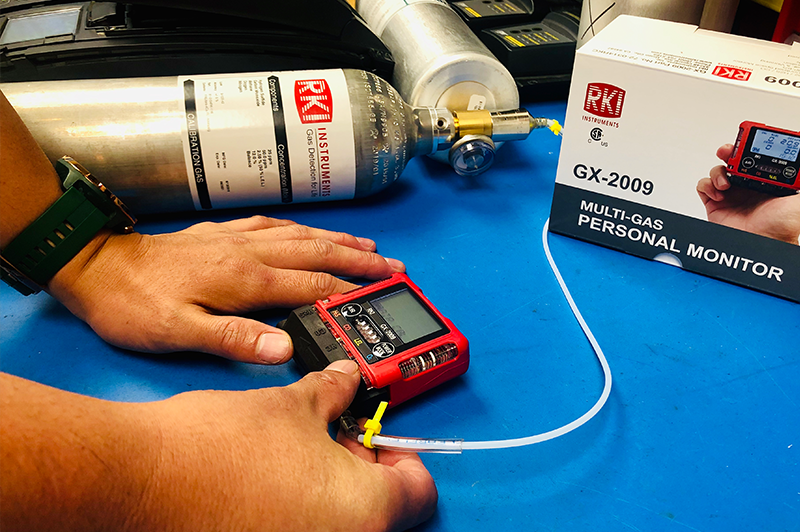
When using a gas monitor, it’s important to make sure your monitor is properly calibrated, otherwise your readings may be inaccurate. To properly calibrate your monitor, you’ll need to use a concentration of the gas you’re trying to detect. The test gas typically comes in disposable or nonrefillable cylinders that either made of steel or aluminum. This is also known as a calibration gas or span gas, but these gases have a shelf life. You’ll need to replace your calibration gases according to the manufacturer’s recommendations in order to take accurate readings.
Learn about the shelf life of calibration gases, including both reactive and non-reactive gas mixtures, so you can use your gas detection equipment properly.
Reactive Gas Mixtures
It’s important to note that there are two different kinds of test gases, reactive and non-reactive, and each come with their own shelf life. Reactive gases are those are considered unstable under certain conditions, and may react to other materials, moisture, oxygen, or other chemicals. These gas mixtures include those containing hydrogen sulfide, chlorine, sulfur dioxide, ammonia, hydrogen chloride, and other reactive elements.
Reactive calibration gas mixtures are typically packaged in aluminum cylinders and are treated, or passivated, by a special process that reduces the reactivity of the mixture. These mixtures have a shelf life ranging from 8 to 12 months. Once the mixture has passed its shelf life, the concentration of the reactive gas will start to decrease and may eventually disappear entirely.
Non-reactive Gas Mixtures
Non-reactive gas mixtures do not contain reactive elements and are considered stable under most conditions. They are not affected by the presence of oxygen, moisture, and other chemicals, which means they do need to be treated or passivated. Non-reactive gas mixtures include those containing alkene or alkene hydrocarbons (methane, ethane, propane, hexane, isobutylene, etc.), nitrogen, hydrogen, carbon monoxide, carbon dioxide, and other non-reactive elements.
Non-reactive gas mixtures typically come in steel cylinders and have a shelf life of three years.
Finding the Right Gas Monitor for Your Workspace
If you’re looking for cost-effective gas detection equipment for your workspace, one of the most trusted brands in the industry is currently having a sale. These products are rarely discounted, so now is the time to invest in a new monitor.
The RKI GX-3R 4 Gas Confined Space Monitor 72-RA-C has just dropped in price. It’s considered the smallest, and lightest CS Gas Monitor on the market, weighing only 3.52 ounces. It clips right onto the user’s breathing zone for the most accurate results. The GX-3R also utilizes a new generation of micro sensors. The LEL sensor comes with two active filaments in one sensor to increase its resistance to silicone poisoning. If one filament gets poisoned the second filament takes over for more peace of mind on the job.
The RKI GX-2009 Portable Multi Gas Monitor 72-0314RKC is another compact choice for workers on the go. It weighs just 4.6 ounces and will fit into the palm of your hand. The GX-2009 is a diffusion gas monitor, which means it measures the standard 4 gases, including combustibles, oxygen, hydrogen sulfide, and carbon monoxide. It also comes with dual audible alarm ports and 3 LED lights, so your workers won’t miss the alarm.
The RKI GX-3R Pro 5 Gas Confined Space Monitor with Bluetooth is another great choice. In addition to the four confined space gases (CO, H2S, LEL, O2), the GX-3R Pro comes with a 5th channel for detecting toxic and infrared sensors. It also comes with Bluetooth for wireless communication. You can send gas readings right to an app on your smartphone, so everyone on your team can stay in the know.
Shop for these newly discounted gas monitors on PK Safety.
Remember that all calibration gases come with warranties from the manufacturer, which includes a “Best if used by” date. You should never use gas mixtures once they’ve passed this date. For more information about the shelf life of calibration gases, contact the professionals at PK Safety.
Related Searches
Shelf Life Of Quad Mix,
Msa Calibration Gas,
Osha Fall Protection Harness Expiration
